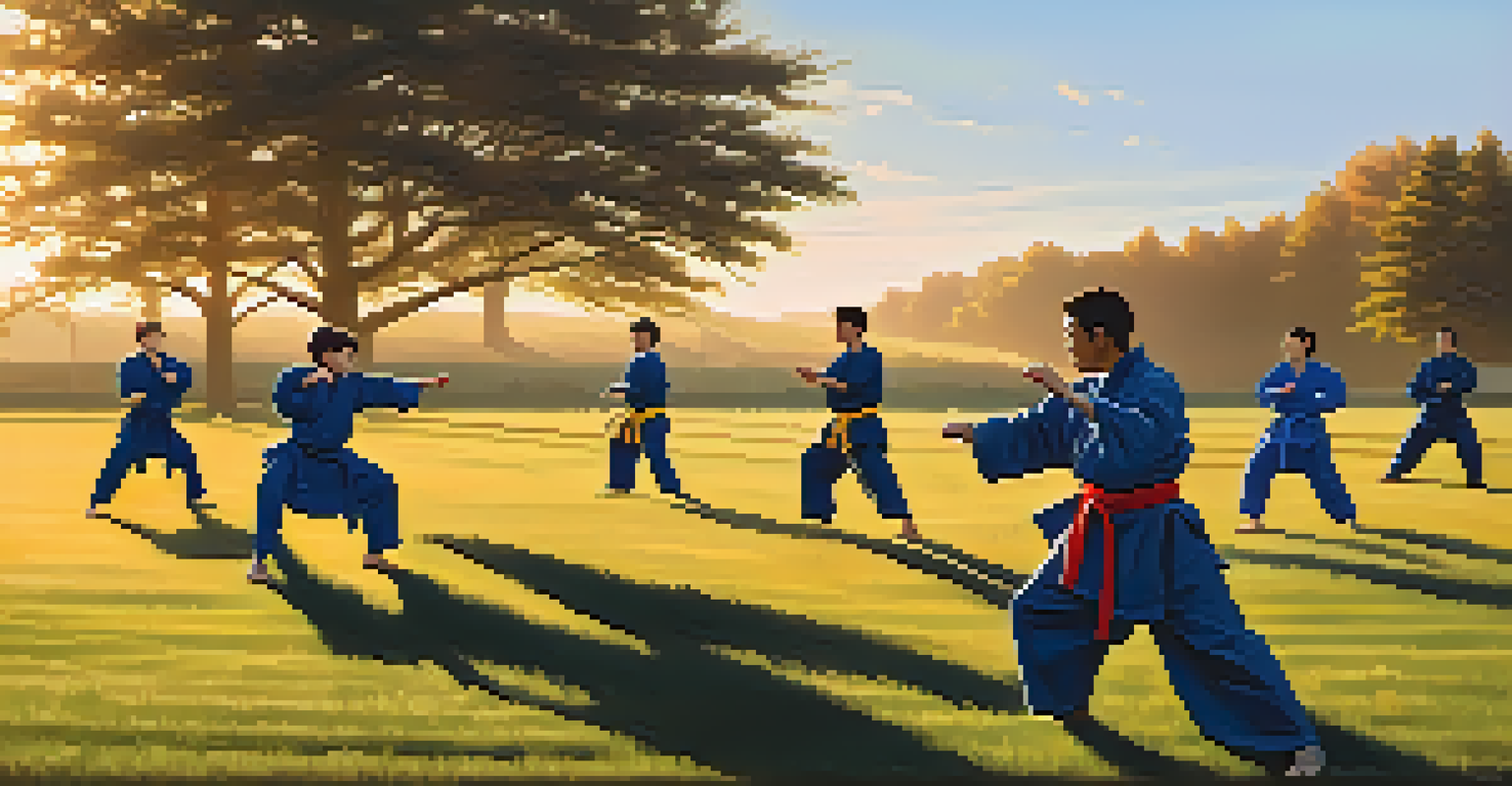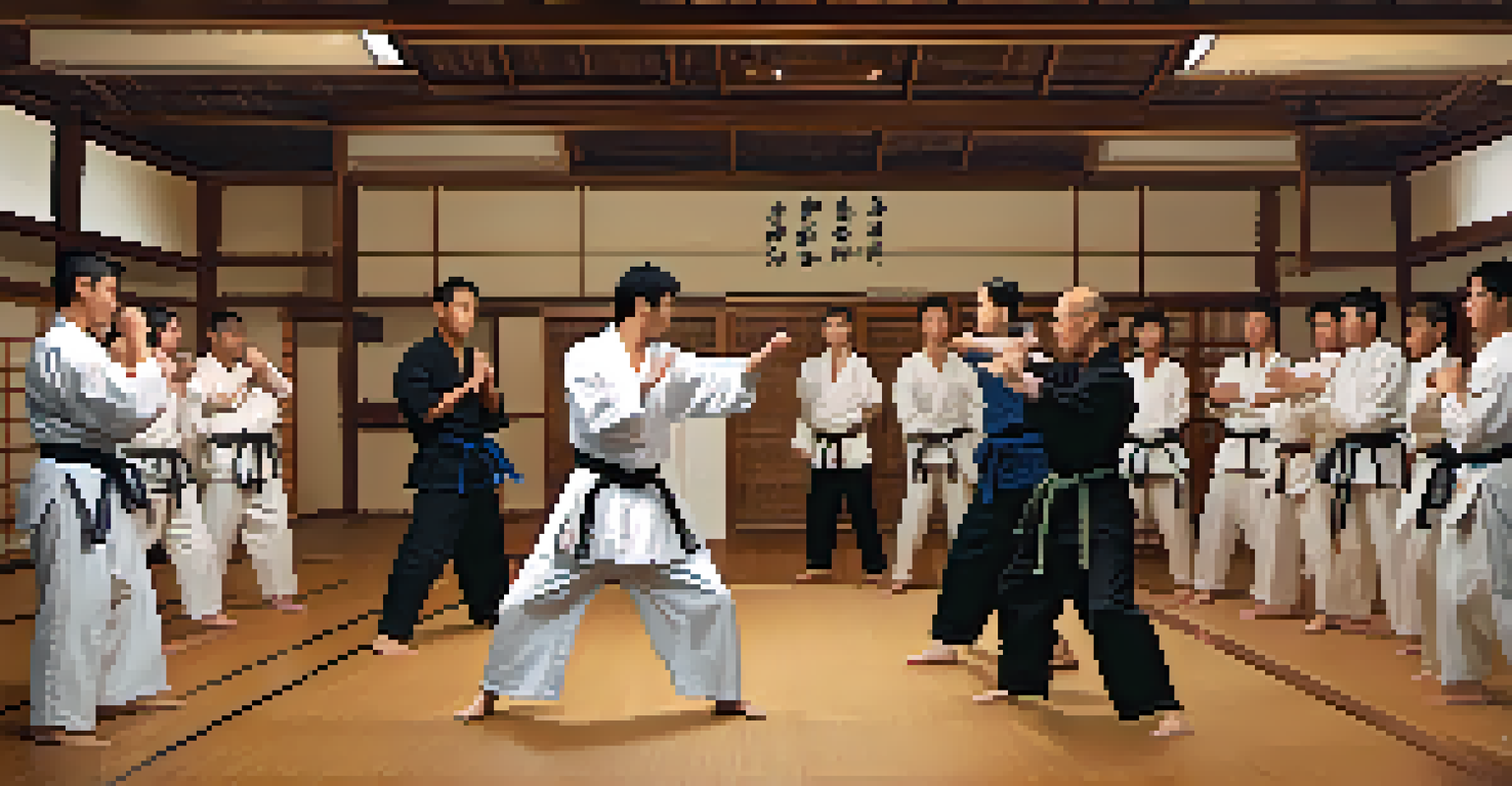Evaluating Self Defense Training Options: Which Is Right for You

Understanding Your Self-Defense Goals and Needs
Before diving into self-defense training options, it’s essential to understand what you hope to achieve. Are you looking to boost your confidence, learn practical techniques, or get fit? Identifying your goals will help narrow down the types of classes that align with your needs.
The best way to predict the future is to create it.
For instance, if your main aim is to feel safer walking alone at night, you might prioritize courses focused on practical self-defense techniques. On the other hand, if you're after a fitness boost while learning self-defense, martial arts like kickboxing or Krav Maga might be the way to go.
Take a moment to reflect on your lifestyle and what you want from the training. This clarity will guide you as you explore different options and make the right choice for your personal journey.
Exploring Different Types of Self-Defense Training
Self-defense training comes in various forms, each with its unique focus and techniques. Popular styles include Karate, Jiu-Jitsu, and Krav Maga, to name a few. Each discipline offers distinct approaches to defense, so understanding their differences is key.

For instance, Karate emphasizes striking techniques and discipline, while Jiu-Jitsu focuses on grappling and ground fighting. If you prefer a more aggressive and street-smart style, Krav Maga incorporates real-world scenarios and quick, effective techniques to neutralize threats.
Identify Your Self-Defense Goals
Understanding what you hope to achieve from self-defense training will help you choose the right classes.
By exploring these options, you can find a training style that resonates with you. Consider attending introductory classes or workshops to experience firsthand what each discipline offers.
Evaluating Instructor Qualifications and Experience
Once you've narrowed down your options, the next step is to evaluate instructors. The effectiveness of your training largely depends on the knowledge and skill of your teacher. Look for instructors with relevant certifications, teaching experience, and a solid understanding of self-defense principles.
Self-defense is not just a technique; it's a mindset.
A good instructor should not only be skilled in their discipline but also be able to communicate techniques clearly and motivate students. Reading reviews or seeking recommendations from former students can provide insights into an instructor's teaching style and effectiveness.
Remember, the right instructor can make a significant difference in your learning experience. Take your time to find someone who resonates with your learning style and goals.
Assessing Class Size and Training Environment
The size of the class and the environment in which you train can greatly influence your learning experience. Smaller classes often allow for more personalized instruction and feedback, while larger classes may provide a sense of community and camaraderie.
Consider what feels comfortable for you. If you thrive in one-on-one settings where you can receive immediate feedback, a smaller class might be ideal. Conversely, if you enjoy the energy of a bustling environment, a larger class could be more motivating.
Evaluate Instructors and Classes
Assessing instructor qualifications and class environments is crucial for a positive learning experience.
Visiting potential training venues can help you gauge the atmosphere. Pay attention to cleanliness, safety measures, and the overall vibe of the space—these factors contribute significantly to your training experience.
Considering the Location and Schedule of Classes
Location and scheduling are practical yet crucial aspects to consider when choosing a self-defense class. It’s important to find a training option that fits seamlessly into your daily routine. Classes that are too far away or have inconvenient times may deter you from attending regularly.
Look for training centers close to your home or workplace, as this will make it easier to incorporate classes into your schedule. Additionally, consider the frequency of classes offered and whether they align with your availability.
Finding a location that feels convenient and accessible will help ensure you stay committed to your training journey. After all, consistency is key when it comes to mastering self-defense techniques.
Budgeting for Self-Defense Training: Costs to Consider
When evaluating self-defense training options, budgeting is a crucial factor. Classes can vary widely in cost based on factors like location, instructor experience, and facility amenities. It's important to determine how much you’re willing to invest in your training.
Many gyms or studios offer introductory rates or trial classes, allowing you to test the waters without committing a significant amount upfront. Additionally, consider whether the training includes gear or materials, as these can add to your overall expenses.
Consider Community and Support
A supportive training community can enhance your self-defense journey and motivate you to succeed.
Ultimately, investing in quality self-defense training can pay off immensely in terms of confidence and safety. Balance your budget with your training goals to find the best fit for your financial situation.
Seeking Community and Support in Your Training Journey
Self-defense training can be a transformative experience, but having a supportive community can enhance that journey. Look for training environments that foster camaraderie and encourage participants to support one another. This sense of belonging can boost your motivation and confidence.
Many self-defense schools host events, workshops, or seminars that allow students to connect outside of regular classes. Participating in these activities can facilitate friendships and create a network of support, which is especially valuable when facing challenges in your training.

Remember, you’re not just learning techniques; you're also building relationships. A supportive community can make your self-defense journey more enjoyable and fulfilling.
Making the Final Decision: Trusting Your Instincts
After exploring various options, it’s time to make your decision. Trust your instincts and consider how each option aligns with your goals, budget, and comfort level. Remember that the best choice is the one that resonates with you personally.
Don’t hesitate to reach out to instructors with any lingering questions or concerns. A good instructor will be happy to address your inquiries and help you feel confident in your choice.
Ultimately, the right self-defense training will empower you with skills, confidence, and a sense of security. Embrace the journey and enjoy discovering what works best for you!